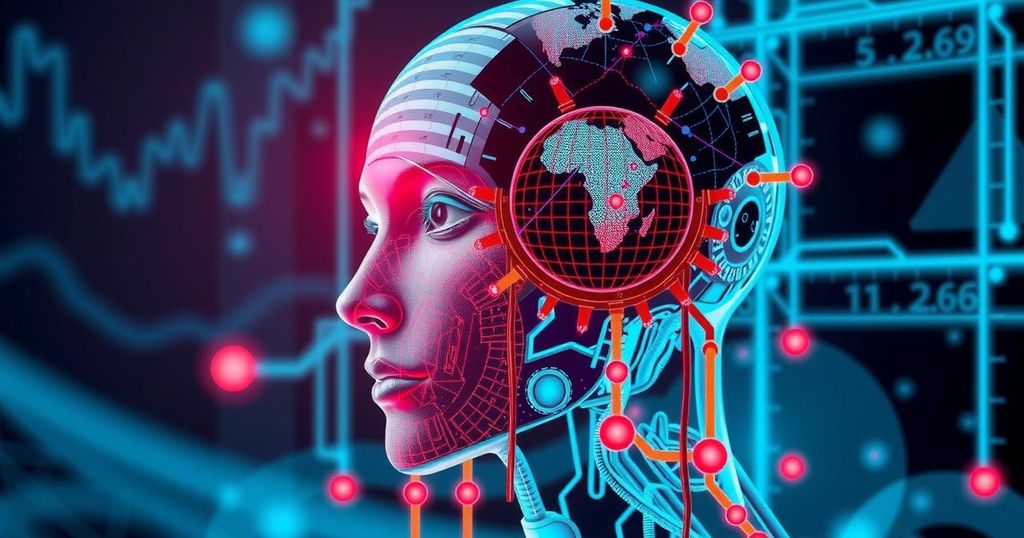The Economic Reality of AI: Expectations vs. Analysis
Economist Daron Acemoglu explores the uncertain economic impacts of AI, predicting modest GDP growth and emphasizing the need for thoughtful regulation and realignment of AI applications toward enhancing human productivity rather than mere job replacement.
In the realm of artificial intelligence (AI), uncertainty lingers despite significant financial investments. Daron Acemoglu, a Nobel laureate and economist at MIT, has devoted recent efforts to understanding AI’s potential economic impact. His research, which suggests a modest GDP growth from AI of just 1.1 to 1.6 percent over the next decade, contradicts industry expectations of revolutionary changes. Acemoglu believes that while some jobs may evolve due to AI, many core job roles will remain intact, revealing an analytical view rather than blind optimism about the technology’s transformative power.
Acemoglu emphasizes the need to distinguish between AI’s prospective contributions and the prevailing hype surrounding it. Many forecasts predict that AI will radically change productivity and job functions. However, Acemoglu’s careful analysis, fueled by multiple studies, reveals that not only does 20 to 23 percent of jobs face some AI exposure, but a significant portion of this potential transformation may be limited to high-level, white-collar tasks.
The MIT professor raises an important question regarding the true application of AI: will it serve to enhance human productivity, or primarily replace jobs? His argument criticizes the current industry’s inclination towards automation rather than utilizing AI to augment existing workforce capabilities. Instead of focusing on “so-so technology” that merely cuts costs, he advocates for a shift towards tools that genuinely elevate human productivity, asserting, “We’re using it too much for automation and not enough for providing expertise and information to workers.”
Acemoglu’s work acknowledges the historical context of technological advancement and its uneven benefits. He cites the Industrial Revolution as an era where technology did not inherently lead to widespread prosperity for workers, highlighting the importance of social dynamics in shaping the relationship between productivity gains and wage increases. In his recent papers, he articulates that policies and deliberate reflections on the adoption speed of AI could mitigate the stress on the labor market, allowing society to integrate these innovations more thoughtfully.
As we contemplate AI’s rapid advancement, Acemoglu warns against the dangers of unchecked hype, stating that it leads to imprudent investments. He envisions a more measured approach to technology adoption, one that fosters open dialogue and considers potential negative repercussions. He concludes, “The faster you go, and the more hype you have, that course correction becomes less likely.” This perspective incites a call for caution as we navigate this burgeoning landscape of technological promise and peril.
Daron Acemoglu, a prominent economist focused on technology’s impact on society, has turned his attention to the implications of artificial intelligence. In his research, he investigates AI’s potential economic contributions, expected productivity gains, and the relationship between technological advancement and job displacement. Acemoglu contrasts prevailing industry optimism with empirical data, seeking a grounded understanding of how AI will shape labor markets over the coming years. His approach emphasizes both historical context and current trends in AI development.
Acemoglu’s analysis paints a nuanced picture of AI and its economic implications, urging us to look beyond the hype and evaluate technological advancements with a critical eye. With expectations of limited GDP growth and a call for more meaningful applications of AI, he challenges stakeholders to prioritize enhancements in human productivity over mere automation. His insights underscore the importance of thoughtful regulation and measured adoption speeds to ensure that societal benefits are maximized while potential harms are minimized.
Original Source: news.mit.edu




Post Comment